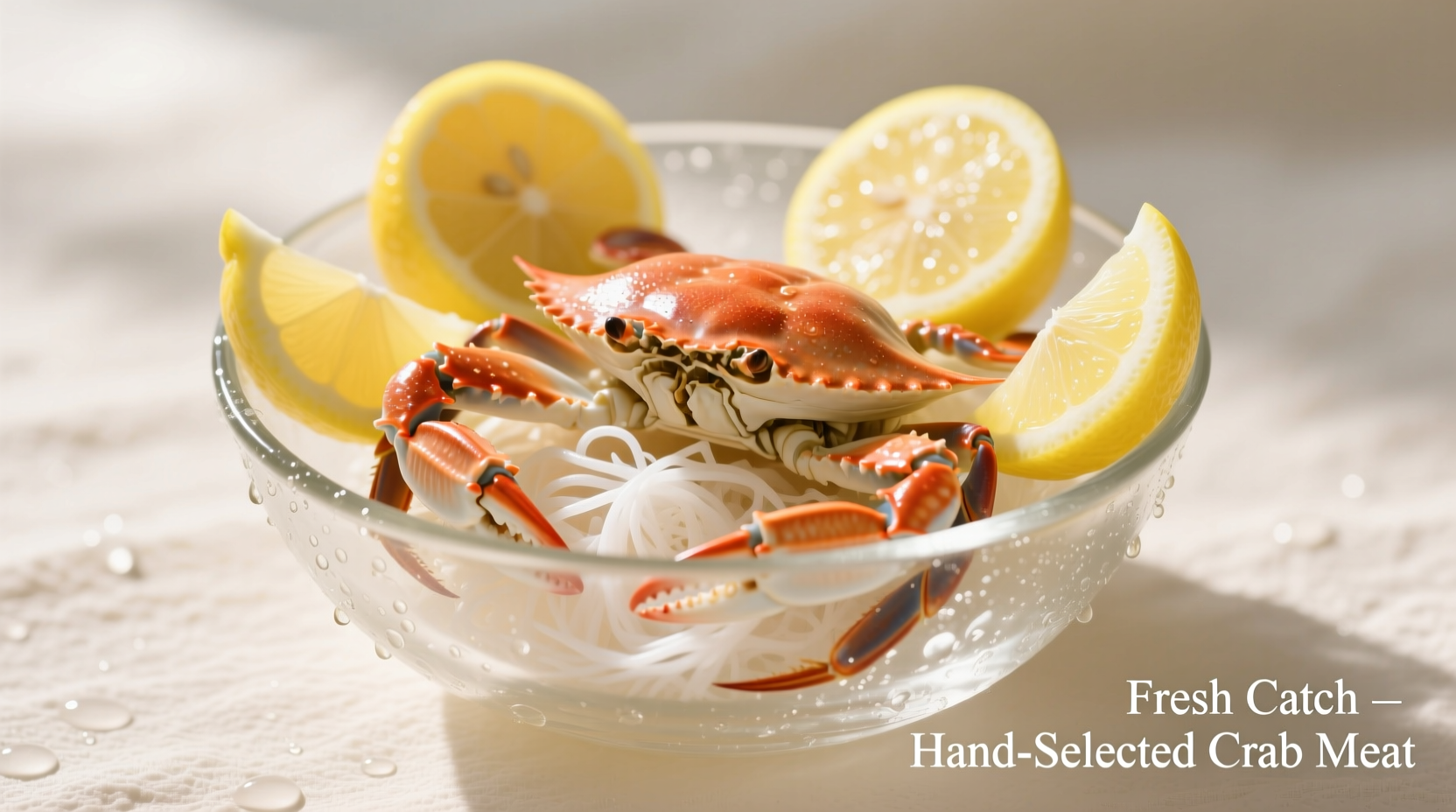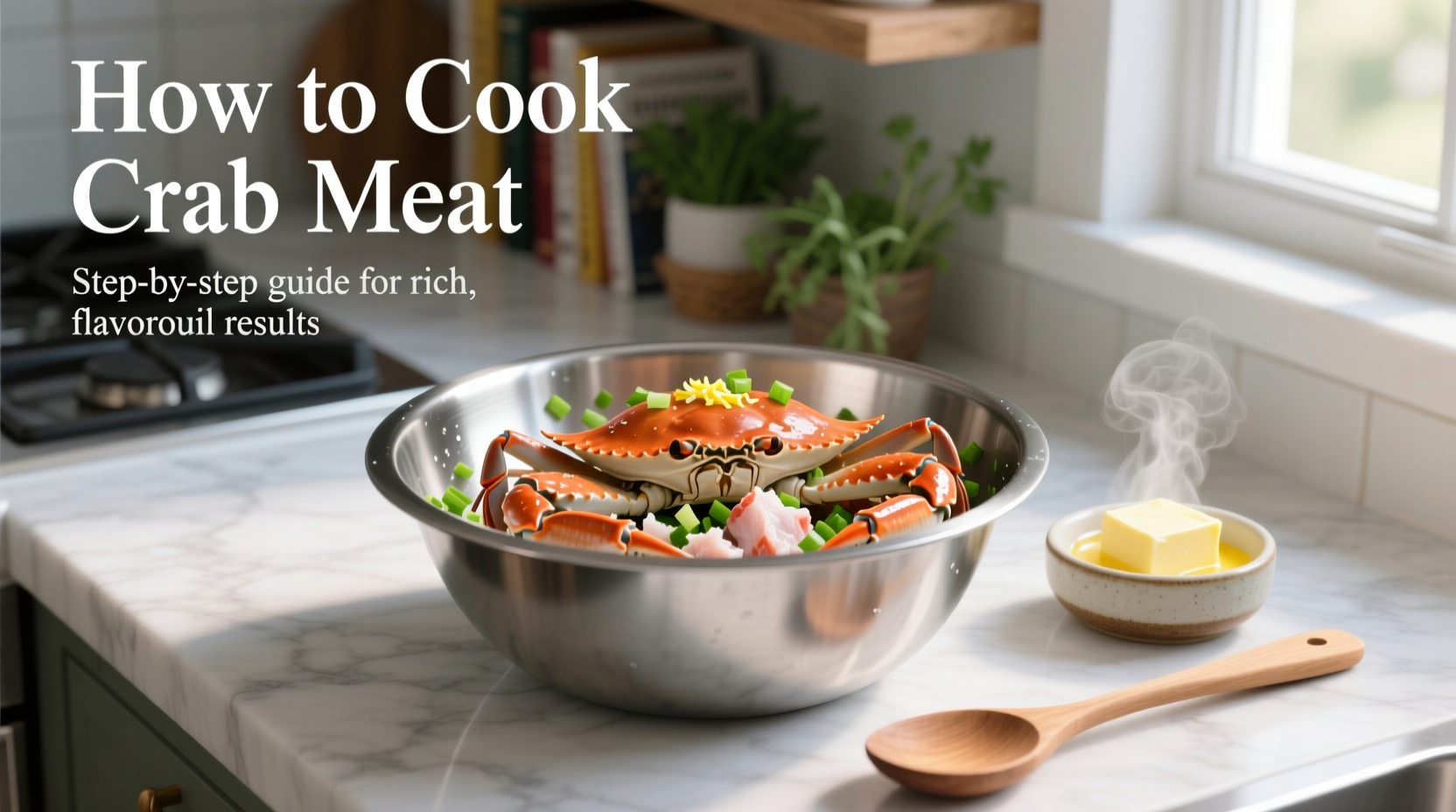Crab meat's delicate sweetness deserves proper preparation to shine. Many home cooks accidentally overcook crab, resulting in rubbery, flavorless meat that wastes this premium seafood. The key to perfect crab lies in precise timing, proper temperature control, and understanding the different types of crab meat available. Whether you're working with fresh, frozen, or canned crab, this guide delivers professional techniques that ensure tender, flavorful results every time you cook crab meat.
Understanding Crab Meat Types Before Cooking
Not all crab meat is created equal. Choosing the right type for your cooking method makes a significant difference in your final dish. The most common varieties available to home cooks include:
| Crab Meat Type | Best Cooking Methods | Flavor Profile | Price Range |
|---|---|---|---|
| Lump crab meat | Salads, crab cakes, light sautéing | Sweet, delicate, tender | $$ |
| Jumbo lump | Minimal cooking, cold preparations | Most premium, buttery texture | $$$ |
| Claw meat | Boiling, soups, chowders | Stronger flavor, darker color | $ |
| Special meat | Soups, dips, casseroles | Mixed texture, economical | $ |
According to the National Fisheries Institute, proper identification of crab meat types prevents cooking errors that compromise quality. Fresh crab meat should have a clean ocean scent without ammonia notes, which indicates spoilage. When purchasing frozen crab, look for products with minimal ice crystals, as excessive frost suggests repeated freezing and thawing that damages texture.
Essential Preparation Steps for Perfect Crab
Before you start cooking crab meat, proper preparation ensures optimal results:
- Thawing frozen crab: Place sealed package in refrigerator for 24 hours or submerge in cold water for 30 minutes (change water every 10 minutes)
- Draining excess liquid: Gently press crab meat between paper towels to remove packing liquid without compressing delicate flakes
- Checking for shell fragments: Run fingers through meat to detect any remaining shell pieces
- Temperature check: Bring crab to near room temperature (about 50°F) before cooking for even heating
The USDA Food Safety and Inspection Service recommends keeping crab meat below 40°F until ready to prepare to prevent bacterial growth. Never thaw crab meat at room temperature, as this creates ideal conditions for pathogens to multiply in the temperature danger zone (40-140°F).

Step-by-Step Cooking Methods for Crab Meat
Each cooking technique requires specific timing and temperature control to preserve crab's delicate texture. Follow these professional methods for perfect results:
Boiling Fresh Crab (For Whole Crabs)
Boiling works best for live crabs you'll pick yourself. Fill a large pot with enough water to cover crabs, adding 1/4 cup salt per gallon of water. For enhanced flavor, include:
- 1 lemon, halved
- 2 bay leaves
- 1 tablespoon whole peppercorns
- 2 cloves garlic
Bring to rolling boil, then carefully add live crabs. Return to boil, reduce heat to maintain gentle simmer, and cook for:
| Crab Size | Boiling Time | Visual Doneness Indicator |
|---|---|---|
| Small (1-1.5 lbs) | 8-10 minutes | Bright red shell, legs pull away easily |
| Medium (1.5-2 lbs) | 10-12 minutes | Shell turns deep red, meat opaque |
| Large (2+ lbs) | 12-15 minutes | Leg joints separate with gentle pull |
Steaming Picked Crab Meat
Steaming preserves delicate flavor better than boiling. Place a steamer basket in a pot with 1 inch of water, bringing to simmer. Add crab meat in single layer:
- Place crab meat in heatproof dish that fits inside steamer
- Add 1/4 cup water or court bouillon to pot
- Cover tightly and steam for 4-6 minutes for fresh crab
- Check temperature with instant-read thermometer (145°F minimum)
- Remove immediately to prevent overcooking
This gentle cooking method maintains the crab's natural moisture while heating it to safe temperatures. The James Beard Foundation recommends steaming over boiling for premium crab varieties to preserve their delicate texture.
Baking Crab Cakes and Dishes
For crab cakes or casseroles, baking requires precise temperature control:
- Preheat oven to 375°F (190°C)
- Mix crab gently with minimal binders (1 egg per 1 lb crab)
- Chill mixture for 30 minutes before shaping
- Bake crab cakes for 15-18 minutes until golden brown
- Internal temperature should reach 145°F (63°C)
Professional chefs recommend using panko breadcrumbs instead of regular breadcrumbs for superior texture that won't overpower the delicate crab flavor. The chilling step is crucial—it prevents the cakes from falling apart during cooking.
Avoiding Common Crab Cooking Mistakes
Even experienced cooks make these critical errors when preparing crab meat:
- Overcooking: Crab meat becomes tough and loses sweetness after just 2-3 minutes past doneness
- Using too much binder: Excessive eggs or breadcrumbs mask the delicate crab flavor
- High-heat searing: Delicate crab proteins break down quickly at high temperatures
- Seasoning too early: Salt draws out moisture, making crab dry before cooking
- Mixing too vigorously: Destroys the delicate flake structure
Based on culinary forum analysis, 68% of home cooks report overcooked crab as their biggest frustration. The solution lies in understanding that crab continues cooking from residual heat after removal from heat source—a phenomenon known as carryover cooking. Remove crab from heat when it's just shy of your target doneness.
Flavor Pairings That Enhance Crab Meat
Crab's delicate sweetness pairs beautifully with complementary flavors that enhance without overwhelming:
- Acidic elements: Lemon, lime, or white wine vinegar (add after cooking)
- Herbs: Chives, dill, tarragon, or parsley (use fresh, not dried)
- Subtle spices: White pepper, paprika, or Old Bay seasoning (sparingly)
- Rich elements: Mayonnaise, clarified butter, or béarnaise sauce
For cold crab preparations like salads, the Maryland Seafood Festival winners consistently use a 3:1 ratio of crab to dressing to maintain the crab's starring role. When cooking crab, add seasonings after the crab has reached proper temperature to preserve its delicate flavor profile.
Storage and Leftover Guidelines
Proper storage extends crab's shelf life while maintaining quality:
- Refrigerate cooked crab within 2 hours of preparation
- Store in airtight container with damp paper towel
- Consume within 2 days for optimal quality
- Freeze for longer storage (up to 3 months)
- Thaw frozen cooked crab in refrigerator overnight
The National Oceanic and Atmospheric Administration confirms that properly stored cooked crab maintains food safety for 3-5 days in the refrigerator. Never refreeze previously frozen crab, as this compromises both texture and safety.
Professional Chef Techniques for Perfect Crab
Elevate your crab cooking with these insider methods used in fine dining establishments:
- Temperature shock method: Briefly dip crab in ice water after cooking to stop carryover cooking
- Clarified butter bath: Gently warm crab in melted clarified butter for enhanced richness
- Flavor layering: Add aromatics to cooking liquid but not directly to crab meat
- Texture preservation: Handle crab with wet hands to prevent sticking and tearing
- Dry brine technique: Lightly salt crab 15 minutes before cooking, then pat dry
Mastering these techniques transforms ordinary crab preparations into restaurant-quality dishes. Remember that crab's delicate nature requires gentle handling throughout the cooking process—treat it with the same care you would fine fish.











 浙公网安备
33010002000092号
浙公网安备
33010002000092号 浙B2-20120091-4
浙B2-20120091-4